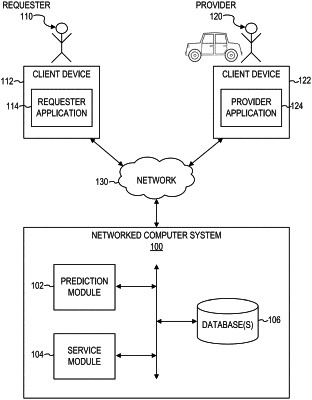| CPC G01C 21/3446 (2013.01) [G01C 21/20 (2013.01); G01C 21/362 (2013.01); G06F 16/29 (2019.01); G06N 5/022 (2013.01)] | 20 Claims |

|
1. A computer-implemented method comprising:
for a place, accessing, by a computer system having at least one hardware processor, corresponding service data for each one of a plurality of requests for a transportation service associated with the place, the transportation service comprising delivery of an item to or from the place, the corresponding service data comprising an identification of the place and at least one of pick-up data and drop-off data, the pick-up data indicating a pick-up location where the delivery of the item began, and the drop-off data indicating a drop-off location where the delivery of the item ended;
accessing, by the computer system, corresponding sensor data for each one of the plurality of requests, the corresponding sensor data indicating at least one path of a mobile device of a provider of the transportation service corresponding to the one of the plurality of requests, the at least one path comprising at least one of a pick-up path and a drop-off path, the pick-up path ending at the pick-up location indicated by the pick-up data, the drop-off path beginning at the drop-off location indicated by the drop-off data;
generating, by the computer system, at least one predicted geographic location using the paths indicated by the sensor data of the plurality of requests; and
storing, by the computer system, the at least one predicted geographic location in a database in association with an identification of the place.
|